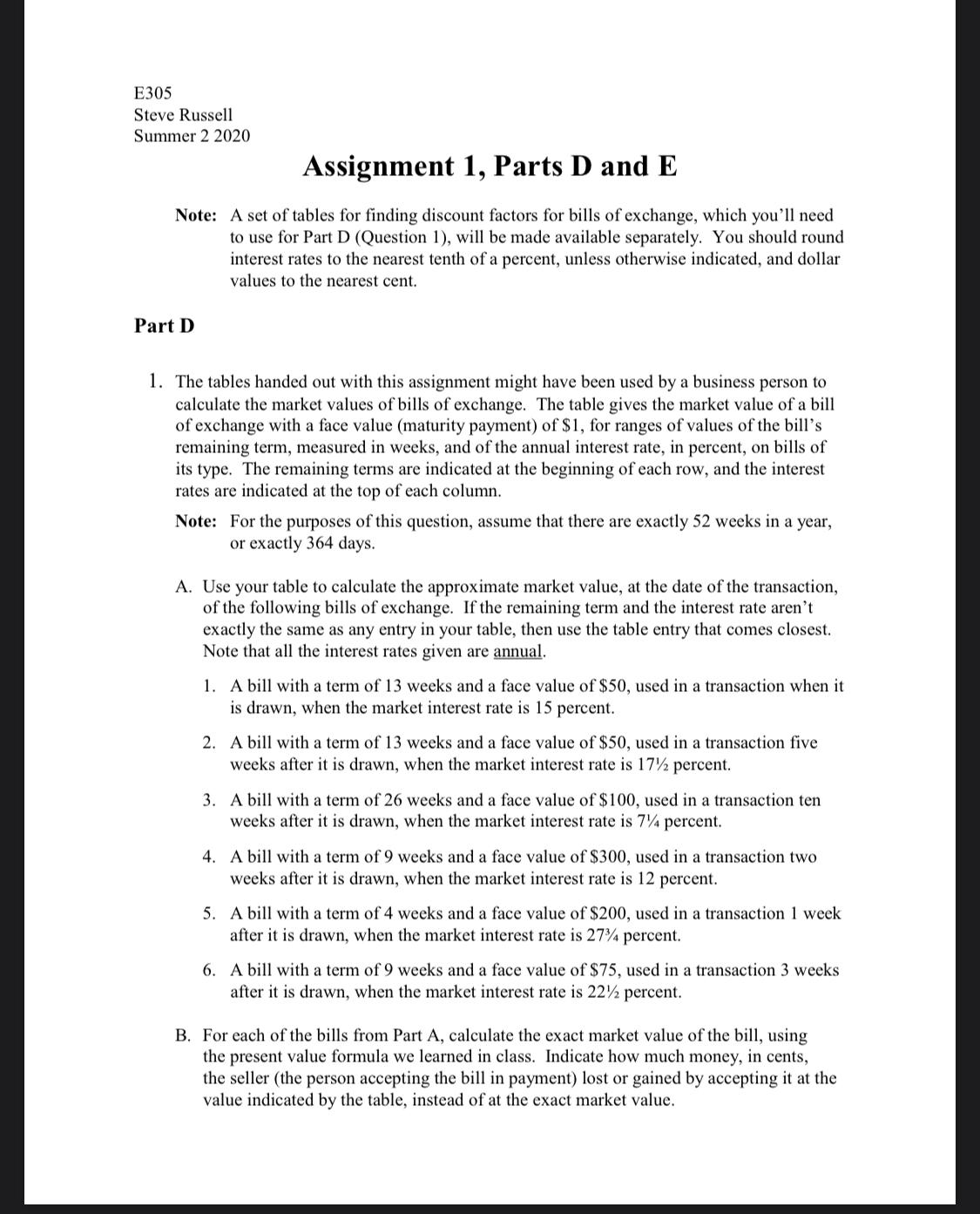THIS IS QUESTION 1 NEEDS TO BE ANSWERED
E305 Steve Russell Summer 2 2020 Assignment 1, Parts D and E Note: A set of tables for nding discount factors for bills of exchange, which you'll need to use for Part D (Question 1), will be made available separately. You should round interest rates to the nearest tenth of a percent, unless otherwise indicated, and dollar values to the nearest cent. Part D l. The tables handed out with this assignment might have been used by a business person to calculate the market values of bills of exchange. The table gives the market value of a bill of exchange with a face value (maturity payment) of $1, for ranges of values of the bill's remaining term, measured in weeks, and of the annual interest rate, in percent, on bills of its type. The remaining terms are indicated at the beginning of each row, and the interest rates are indicated at the top of each column. Note: For the purposes of this question, assume that there are exactly 52 weeks in a year, or exactly 364 clays. A. Use your table to calculate the approximate market value, at the date of the transaction, of the following bills of exchange. If the remaining term and the interest rate aren't exactly the same as any entry in your table, then use the table entry that comes closest. Note that all the interest rates given are annual. 1. A bill with a term of 13 weeks and a face value of$50, used in a transaction when it is drawn, when the market interest rate is 15 percent. 2. A bill with a term of 13 weeks and a face value of$50, used in a transaction ve weeks after it is drawn, when the market interest rate is 17% percent. 3. A bill with a term of26 weeks and a face value of$100, used in a transaction ten weeks after it is drawn, when the market interest rate is \"M percent. 4. A bill with a term of 9 weeks and a face value of $300, used in a transaction two weeks after it is drawn, when the market interest rate is 12 percent. 5. A bill with a term of4 weeks and a face value of $200, used in a transaction 1 week after it is drawn, when the market interest rate is 23% percent. 6. A bill with a term of 9 weeks and a face value of $75, used in a transaction 3 weeks after it is drawn, when the market interest rate is 22% percent. B. For each of the bills from Part A, calculate the exact market value of the bill, using the present value formula we learned in class. Indicate how much money, in cents, the seller (the person accepting the bill in payment) lost or gained by accepting it at the value indicated by the table, instead of at the exact market value







